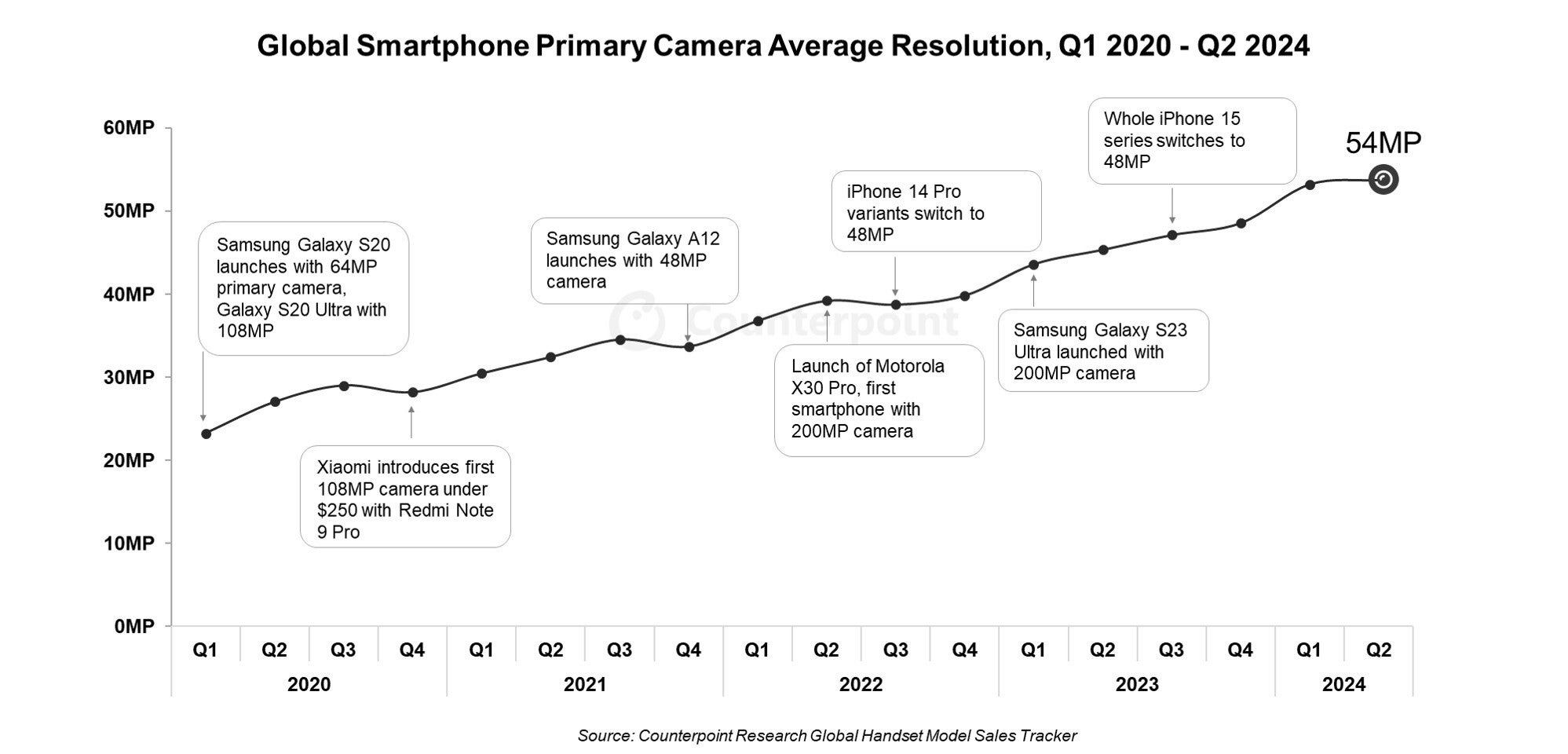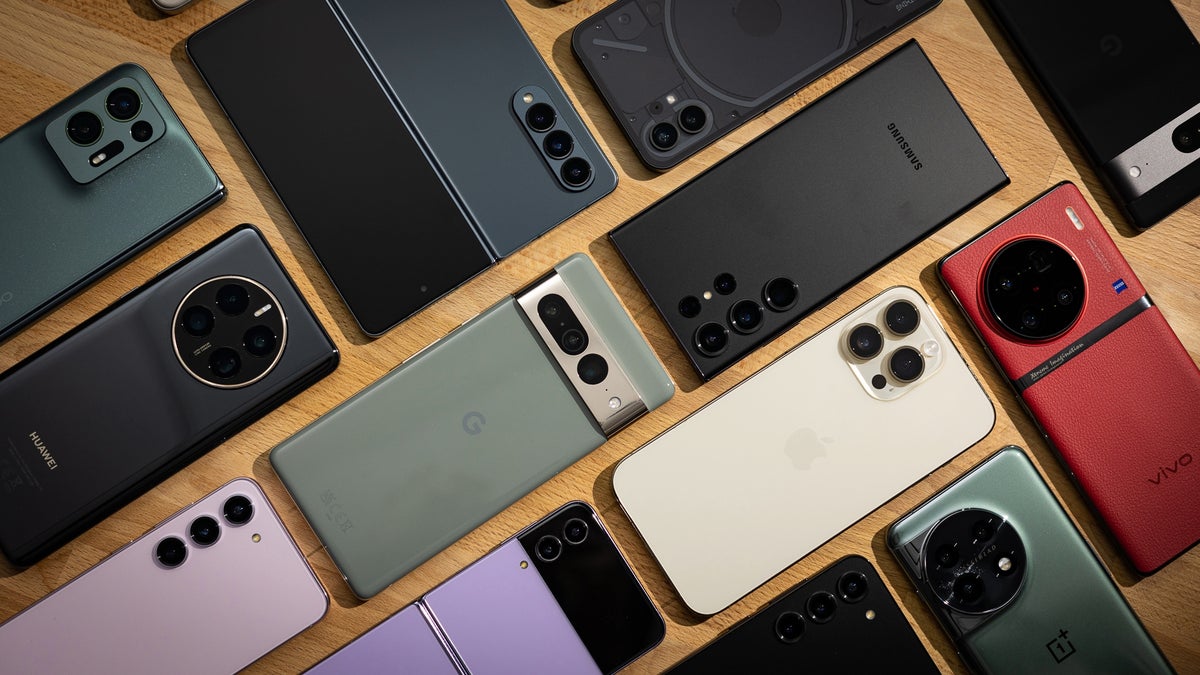Over 50% of the smartphones sold in Q2 came equipped with 50 MP cameras
A recent study from tech market research firm Counterpoint reveals that in Q2 2024, the average resolution of primary smartphone cameras hit an all-time high of 54 MP. That’s double the 27 MP average from Q2 2020, showing just how quickly camera tech has evolved in a few short years.This steady rise in camera resolution is driven by consumers’ ongoing demand for better cameras, a feature that remains a top priority when picking a smartphone. To keep up with these expectations, phone makers have consistently pushed camera innovations and embraced higher-resolution sensors.

A jump from 27 MP in Q2 2020 to 54 MP in Q2 2024.
In fact, over 50% of smartphones sold during that quarter boasted 50 MP cameras. The study revealed that this surge in resolution primarily came from the entry-to-mid-range ($100-$250) and premium (over $600) price segments.
In the premium segment, Apple played a big role by bumping up to a 48MP camera from the previous 12MP in the iPhone 15 series. Meanwhile, in the entry-to-mid-range market, Android makers, particularly from China, have been pushing higher-resolution cameras as a way to stand out. There’s also been steady growth in using high-res sensors like 108MP and 100MP, especially in mid-range phones.
Over time, the trend in rear camera setups has changed, too. Back in Q3 2020, quad-camera phones were all the rage, accounting for 32% of shipments. But by Q2 2024, triple-camera setups took the lead with a 45% market share. This shift happened because phone makers started packing macro capabilities into ultrawide and telephoto lenses while also bumping up sensor sizes for better low-light performance.
Lower-resolution cameras are predicted to keep climbing in resolution, but the trend with higher-resolution cameras is expected to level off soon. Instead of pushing the MP count further, manufacturers are likely to shift focus to other areas to enhance image quality. One big area of interest is the telephoto lens, where improvements in optical zoom and better light capture are expected to make a real difference.
I think it’s not really shocking that the average primary camera resolution has doubled over the past four years. Just take a look at the phone camera scores for some of the newest phones that dropped this year. And if that wasn’t enough, this month alone, five flagship smartphones from China are set to launch, all boasting some impressive camera specs.For example, the upcoming Oppo Find X8 is rumored to flaunt a triple camera system featuring a 50 MP main sensor, a 50 MP ultra-wide lens, and a 3x periscope telephoto lens. Similarly, the Xiaomi 15 Pro is expected to showcase its own triple-camera arrangement, all with 50 MP sensors. And then there’s the Honor Magic 7, which may include a 50 MP main sensor paired with a 50 MP periscope telephoto camera, along with a third sensor that could either be 50 MP or 200 MP, depending on the model.
